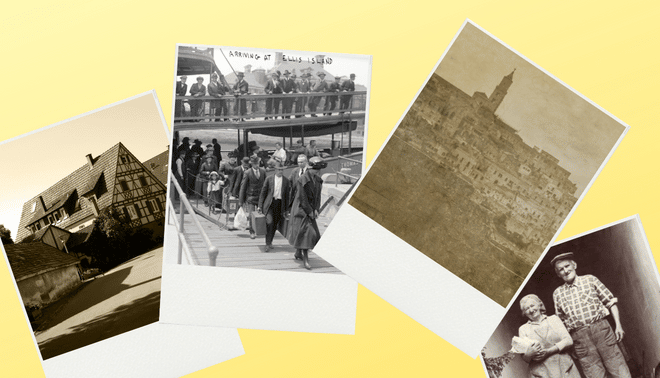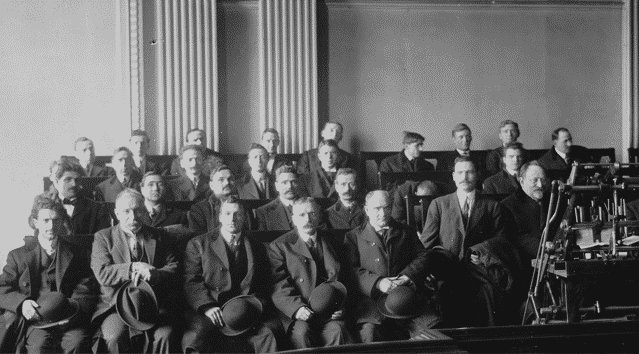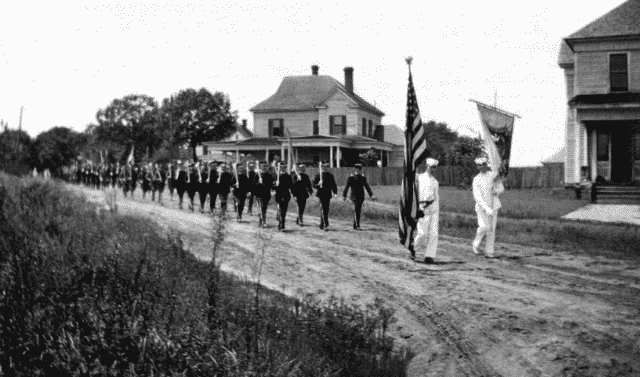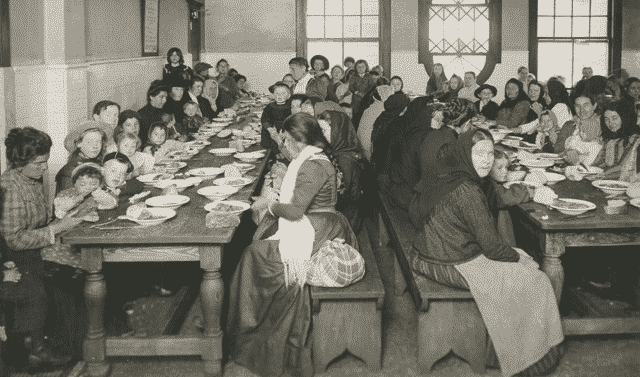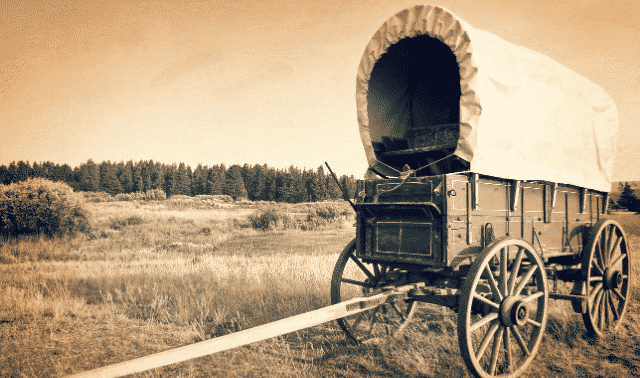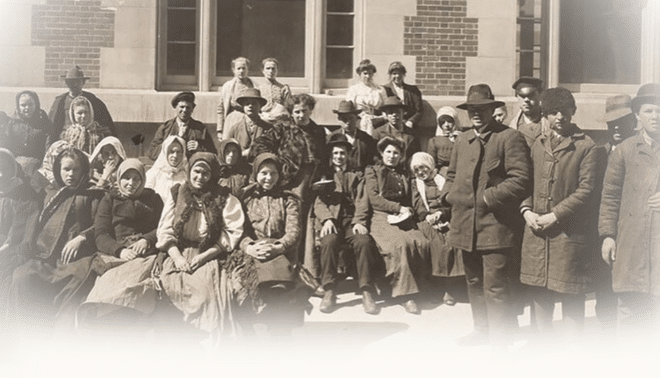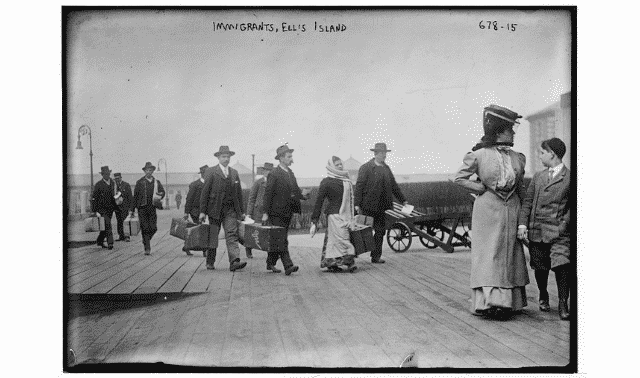Sign up for the Family Tree Newsletter Plus, you’ll receive our 10 Essential Genealogy Research Forms PDF as a special thank you!
Get Your Free Genealogy Forms
"*" indicates required fields
Most immigrants to the United States endured a grueling, weeks-long journey via ship. Today, many of their descendants dream of doing that trip in reverse—albeit much more comfortably, by plane in less than a day.
But before we can do that, we first need to determine an immigrant’s exact location of origin. You’ll need to know what archives to search, as well as what records were created. (And, if you’re traveling, which places to visit.)
Unfortunately, many ancestors left scant details about their hometowns. They might have identified a big city like Naples or Paris or Warsaw, but were actually from little villages near those big-name locales. “Near enough” isn’t good enough for Old World research, since few other countries historically had (for example) widely available, full-country censuses. You need to determine that exact town or village, plus what district(s) it was a part of throughout time.
Luckily for astute US researchers, many records can lead us to the specific place information we seek. This article discusses some records for determining ancestral hometowns, including those that are often overlooked or harder to come by.
1. Ship Manifests
These widely researched documents are often among the first resources for immigrant ancestors. I
covered ship manifests as part of my roundup of basic immigration records in the January/February
2022 issue.
But here are some highlights about this type of record:
- The government first mandated passenger reporting in 1820. Prior to that year, coverage will vary.
- Before 1891, manifests were primarily created to regulate customs, not document immigrants. As such, the genealogical information in them is limited, and almost never lists an exact town of origin.
- After 1891 (and over the next two decades), more information was added to ship manifests. Details helpful for origin information include place of last residence (1891), exact place of birth (1906), and name of closest relative or friend left behind (1907).
2. Naturalization Records
The same article mentioned earlier also covers naturalization records. The naturalization process—even if your ancestor ultimately didn’t become a citizen—required detailed information about your ancestor’s life and birth.
Here are a few notes about naturalization records:
- Naturalization forms were standardized in 1906 and began to list place of birth and place of last residence, as well as place of birth of spouse. Place of marriage was also eventually listed.
- Women automatically gained citizenship from their husbands (either upon marriage to a US citizen or upon naturalization of an alien husband) from 10 March 1855 to 22 September 1922. As such, married women would not have their own naturalization paperwork during that time.
3. Vital Records
Records of birth, marriage, and death are the staples of genealogy, setting the scope of research and tracking a person throughout their lifetime. Vital records for immigrants or their children may, specifically, list an exact place of foreign birth.
Unlike in some European countries, US vital records are decentralized, left to each individual state. As a result, vital record availability varies. Some states didn’t keep such records until late into the 1900s, while some states have records clear back to a town’s founding in Colonial days. In general, you can find more-recent documents only from the state department of health, with older records (often, those whose age puts them outside the scope of privacy laws) at the state or county archive. Marriage records tended to be kept earlier and with more consistency than birth or death records.
Don’t forget to obtain vital records for all of an immigrant ancestor’s family: not just children, but also siblings, nieces and nephews, cousins and so on. An immigrant’s place of birth in the old country could be on someone else’s certificate, even decades after they died. Whenever possible, obtain at least a photocopy or photograph of the original record (as transcripts allow for errors or inadvertent omissions, and indexes don’t include every detail).
For more on vital-record availability, check with the local genealogical society or Family Tree Magazine’s collection of state research guides.
4. Marriage Licenses
One kind of vital record deserves special mention: marriage licenses. Some states or jurisdictions retained these documents separate from marriage returns and certificates, meaning there might be multiple records of the same event. Copies of marriage licenses (and other records) may be at both the state archives and the county clerk’s office.
New York City, for instance, retains marriage certificates until 1937, but also marriage licenses (which include affidavits and other documentation in addition to a copy of the actual certificate) from 1908 onward. The license asks for place of birth for both spouses, as well as that of their parents.
5. Church Records
Ecclesiastical records or other documents created by churches often contain more information
than vital records. Marriage records may contain a place of baptism for both spouses—especially
in the Catholic Church, which needed to ascertain that both individuals were Catholic.
Seek these documents even if you’ve already found government records of the event. I’ve seen civil vital records and corresponding ecclesiastical records that were clearly written by the same hand, but only the church record includes origin information.
Church records may be held by the original church; a regional, diocesan, or state archives; or almost anywhere in between. Consider donating to a church when requesting records, even if a fee isn’t specifically required.
6. WWI and WWII Draft Registrations
In both World Wars, all men deemed of fighting age had to register for Selective Service. Originally just for males age 21 to 30 or 35, draft eligibility expanded to include wider age groups as each war dragged on. By the end of World War I, all men born 12 September 1873 to 12 September 1900 were required to register, and in World War II, all men born 21 April 1877 to 31 July 1927.
Each conflict had distinct rounds of registration, and not all cards asked for the same information. However, most do request place of birth. Those that don’t might ask for information on the nearest living relative, who could still be living in the home country.
One little-known gem among these records is the Second Registration during World War I, taken in the summer of 1918 for men born between 6 June 1896 and 24 August 1897. This registration asks for the place of birth of the registrant’s father, an opportunity to learn a place of origin for immigrant parents of US-born children.
Draft registration records are well covered online, notably at FamilySearch, Ancestry.com, and Fold3 (especially for younger men during World War II).
7. Military Service and Pension Records
While military records are generally good resources for learning about ancestors, they can be helpful for immigrant ancestors specifically. Affidavits, applications (e.g., pension applications) and other records often list an exact place of birth.
The government offered pensions for service throughout US history, even back to 1775. Search for pension application (and other) files at Ancestry.com, Fold3 and FamilySearch if your ancestor was part of any of the following conflicts: the Revolutionary War, the War of 1812, the Mexican-American War, the Civil War (either side), various “Indian Wars” (especially in the 19th century), and the Spanish-American War. Many of these documents are still only held in manuscript form at the National Archives in Washington, D.C.
Service records from World War I and World War II are generally available through the National Archives at St. Louis (though US Army records for most of the latter conflict were destroyed in a 1973 fire). Look for state-specific veterans records as well.
8. Employment Records
While often hard to come by, employment records can be genealogical treasures. Applications for employment could include place of birth as well as citizenship data, in addition to other valuable genealogical information.
Some employment records are online (notably some railroad records at Ancestry.com). But most employment records, when extant, exist only as manuscripts. First check to see if the company itself has an archive. If it doesn’t, then determine the location of the company’s headquarters (both past and present) to see if its records have been deposited with a local, state, or regional library or archives.
9. Social Security Applications
Social Security began in the mid-1930s, and most everyone who was alive and eligible applied throughout the following decades. Social Security applications, known as SS-5s, ask for both a place of birth (albeit, often just a country of birth) and parents’ names. SS-5s are available for a fee through a Freedom of Information Act request to the Social Security Administration.
10. Alien Registrations
The “immigration record essentials” article mentioned earlier also covered one other document: alien registrations. Throughout US history (often during times of war), the government required those born in countries other than the United States to register, and these documents can—perhaps unsurprisingly—provide information about place of birth.
Alien registration began in 1798 (as part of the controversial Alien and Sedition Acts, a response to “Quasi-War” with France) and continued to 1828. Most of these early alien registrations don’t survive. Copies of those that do are generally included with naturalization records from 1816 to 1828 (when it was a requirement for that information to be included with citizenship paperwork).
Registration was optional during the Civil War, when alien men who hadn’t yet applied for citizenship could claim exemption from conscription by filing. Surviving records are held by various National Archive regional branches in Record Group (RG) 110.
During World War I, “enemy” aliens—that is, people from countries that the United States had declared war on—were required to register. Records of German and Austro-Hungarian men (and German women, plus some US-born women who married German nationals) survive only for a few states, mostly at regional National Archives branches in RGs 21 and 118.
Those born in enemy countries (namely, Germany, Italy and Japan) also registered during World War II. But the Smith Act, passed by Congress in 1940, mandated the first nationwide registration of all non-citizen adults. Aliens filled out Form AR-2, and records today are available via the USCIS (U.S. Citizenship and Immigration Services) Genealogy Program, often as part of “A-Files” (Alien Files). Some states kept their own alien registration, including North Carolina (which had done so since 1927) and Maine.
11. County Histories
To celebrate the centennial of the United States in 1876, many counties published histories and biographies of prominent citizens. These “mug books” can sometimes contain detailed sketches, including everything from photographs to origin information to a family’s entire immigration story. Most information should be taken with a grain of salt, as individuals generally paid to have their information included, and so may have deliberately included inaccurate details. Nevertheless, these books may contain information not found elsewhere, especially for earlier immigrants.
Start with the county library, or look into P. William Filby’s A Bibliography of American County Histories (Genealogical Publishing Company) to see if a county history(ies) exists for your county of research.
12. Newspapers
Historical newspapers have exploded in popularity in recent years, with massive databases like Newspapers.com, GenealogyBank and NewspaperArchive offering papers by the millions. In them are articles that could help you find at least clues to origin information. Search widely for newspapers that might mention your ancestors. Many cities had multiple dailies, and it’s worth looking through each one in case an obituary or story ran only in one.
Obituaries and death notices are a great place to start, as the decedent’s birthplace or immigration story might be mentioned. Other articles—notices of wills, news about steamship arrivals, and so on—might hint at an ancestor’s comings and goings.
Think outside the mainstream to research publications not necessarily intended for the general public, including:
Ethnic newspapers (often in the old country’s language) were popular in various areas and likely included information about ancestral origins. The Immigration History Research Center Archives (IHRCA) in Minneapolis has a huge collection of ethnic newspapers, as does the Historical Society of Pennsylvania (HSP).
Religious newspapers or periodicals may include obituaries with origin details. Membership in a religious organization might also be a clue to birthplace.
Company newsletters or magazines sometimes profile prominent employees, some of them immigrants.
13. Cemetery Records
Tombstones can be great sources of origin information, as certain ethnicities and religions inscribed large amounts of information on graves. Check popular sites like Find a Grave or BillionGraves, or visit the cemetery yourself.
Cemetery records encompass more than just tombstones. The cemetery office may have other documents, some of which might list next-of-kin or other information about the decedent. Or perhaps a local historical or genealogical society conducted a tombstone survey or created transcriptions decades ago, including headstones that are no longer extant or legible. County or regional historical societies may also hold local cemetery records, especially if the cemetery is now defunct.
14. Probate Files
The files created after an individual’s death may give insight into their place of birth. The decedent may have left money to relatives living overseas, or owned land in the old country that needed administered.
Probate records are generally found in probate courts (which may have varying names, like surrogate’s courts, or orphans’ courts or chancery courts). Many pre-1900 probate files from across the country have now been digitized and/or indexed on FamilySearch and Ancestry.com. Wills are the most common and often the most helpful, but loose papers and “lists of distributes” can also contain useful information.
Wills of the deceased in the country of origin could give clues to emigrants living in the United States, such as Henry F. Waters’ Genealogical Gleanings in England: Abstracts of Wills Relating to Early American Families (Clearfield).
15. Fraternal Organization Records
Like today, people joined clubs and organizations to socialize with others who shared a common interest or background. Ethnic fraternal organizations were extremely common among immigrants—groups such as Ancient Order of the Hibernians (an Irish-American organization) or the Independent Order of the Sons of Norway.
If applications still exist for these groups, they could be a boon for researching an immigrant ancestor. These types of records could be scattered across all sorts of regional or state archives, or even remain with the group itself!
Many such groups also had death benefits that members could pay into, so look for files associated with these “mortuary funds.” One such example is the Polish Roman Catholic Union of America’s insurance claim files, held by the Polish Genealogical Society of America.
16. Neighbors
Even if you can’t find a town name in records of your target individual, you might have more luck
in the records of someone affiliated with them, such as a neighbor.
For example, chain migration has populated the United States from the very beginning, with families from the same place immigrating together or joining relatives already in the New World. Families and even whole towns often settled together. So if five out of six Italian-American families in an apartment building were from the same hometown, it’s a good bet that the sixth was as well.
Other paths of research begin with witnesses or informants in records, as well as any godparents or executors named by documents.
A version of this article appeared in the September/October 2022 issue of Family Tree Magazine.
Related Reads
FamilyTreeMagazine.com is a participant in affiliate programs through Amazon and Genealogical Publishing Co. It provides a means for this site to earn advertising fees, by advertising and linking to affiliated websites.
ADVERTISEMENT

